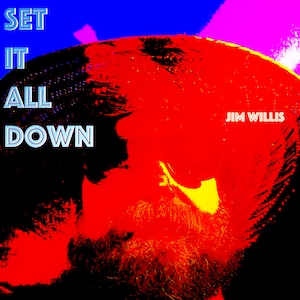that’s a gimmicky title. sorry.
but i’ve got this cool little bit of data that is worth having a look at.

So, what does that show?
Well, since January of this year my heart rate variability as represented by the blue line which is a natural log transformed RMSSD (the beat to beat interval of my heart) shows a steady increase. As HRV increases relative to a baseline it can be an indicator of improved vagal health (less stress, better recruitment of the parasympathetic nervous system). Basically, since January I’ve been feeling better and less stressed out.
Working out hard can cause your HRV to plummet the next day or two after hard workout, that’s a sign that your body is repairing itself from the workout. In my case, it also plummets for the next day or so after I play a gig out til 2AM and don’t get good sleep. But anyway, according to the blue line above, even with the gigs and workouts my HRV is increasing!
So note that even though that blue line doesn’t look like it really went up that much, because it’s a log() the increase over time in this case is about a 40% increase in my HRV as measured by rMSSD from January to August.
But what’s more interesting here is that MAF 1 mile test showing a steady DECREASE since January. (Those little green and yellow dots).
The idea behind Phil Maffetone’s training philosophy is to do a lot of long, really low heart rate workouts to better condition the aerobic system. The MAF 1 mile test numbers here show how quickly I can run a mile keeping my heart rate below 135bpm. (obviously, as one would expect, if i go flat-out i’m much faster than the times represented here 🙂
Not only does this low heart rate training do good things for conditioning but – as seems to prove out here in the graph of my little N=1 study – training at low heart rate (in my case 135bpm max) seems to allow me to train and get faster without causing the kind of stress response on my body that would cause my HRV to reduce over time.
Of course, there are about a gazillion other reasons why my HRV could have been increasing since January: I’ve been way more consistent with meditating every morning, I’m eating more carbohydrates (and putting on the pounds to show it 🙂 and have been outside more because it’s summer time. All of those things could also contribute to the increase in HRV.
What’s interesting here though is that i’ve got fitter (or at least faster at the same heart rate) over the past few months without incurring much of a hit on my vagal tone. Prior to 2016 i was tracking my data in different applications and it would take me too long to put up a graph but basically I was working my ass off with a lot of high intensity workouts or long rides/runs with my heart rate at around 70-85% of max and i was getting a bit faster but the trend over time was a reduction in my HRV. meaning while i was getting faster i wasn’t necessarily getting fitter.
Since the beginning of this year i’ve reduced my workout intensity a lot and either go very hard for short workout (90-100% of max HR for a few sprints) or very easy for long ones (135bpm for an hour or more), not too much in between. This seems to be making me both faster and, perhaps more importantly, fitter.
anyway, food for thought. If you want to VERY EASILY track you HRV on your iPhone, HRV4Training is tough to beat.



